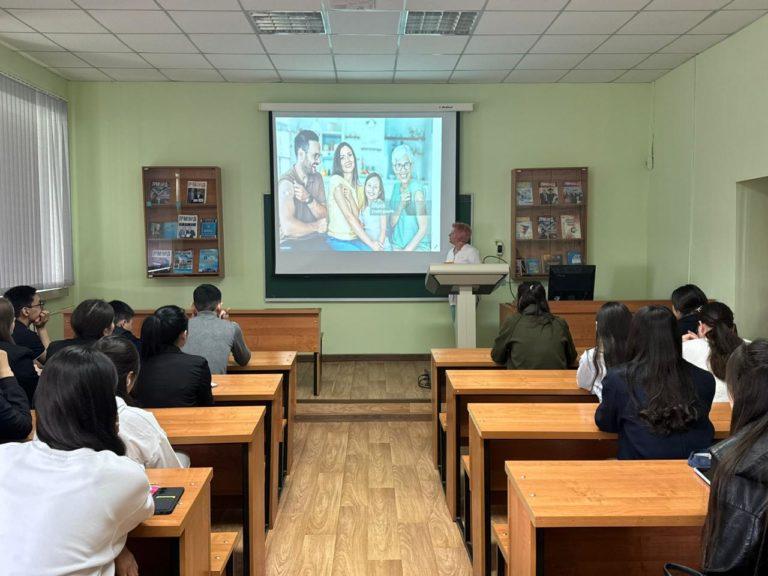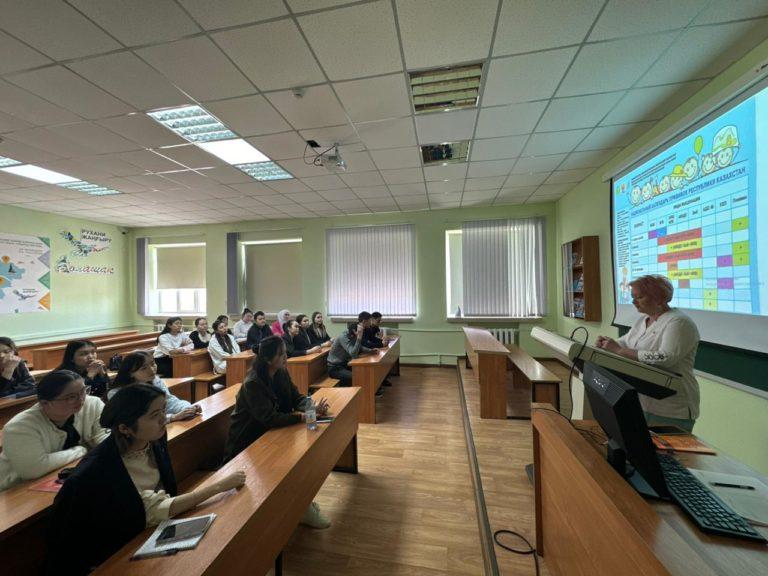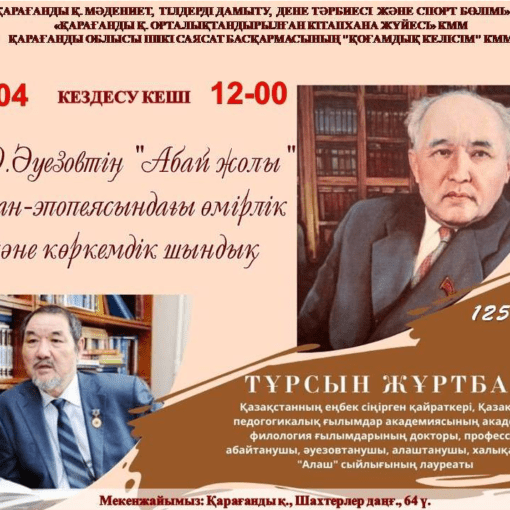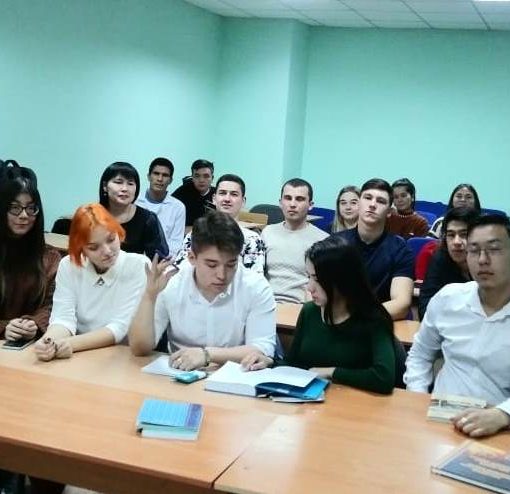On April 24, 2024, the Academy’s doctor S.G. Kuur gave a lecture on the topic “Vaccines: protecting health for past, present and future generations” as part of the European Immunization Week.

Vaccination is one of the greatest achievements of medicine, saving 2 to 3 million lives every year. Largely thanks to it, infant and child mortality has decreased, as well as lifelong disability, which previously developed after a number of infections. And smallpox, which tormented the planet’s population for thousands of years, was completely defeated!

Basic principles of vaccination
To effectively combat epidemics, it is important that collective immunity is formed – a layer of people who have antibodies to a given infection and are necessary to interrupt its spread. This threshold is different for each disease, but in general, the more contagious the disease, the higher the percentage of people immunized should be. For polio, the figure is 80%, and for measles, due to its high contagiousness, it is 95%.
Each country determines its own vaccination policy. Kazakhstan gives freedom of choice to its citizens and focuses on education. In other countries, vaccination is mandatory and refusal to do so will result in sanctions, such as being unable to take certain jobs or a fine.

However, in many countries there is a growing group of people who refuse to vaccinate and vaccinate their children due to mistrust in vaccines. In 2019, the anti-vaccination movement was listed as one of the top 10 public health issues.

How it all began
Even in ancient times, people began to note that with some diseases a person only gets sick once in his life. Now we would say this about rubella or chickenpox. But in earlier times, smallpox was one of these diseases. It was known about it back in antiquity. In such patients, characteristic skin lesions were noted, on which blisters with purulent contents formed. The disease was accompanied by high mortality; according to some data, about 40% of patients died from it. And the survivors were forever left with scars on their skin, covering all parts of the body, including the face. And people with such scars never got sick with smallpox again, including when the next epidemic occurred. Therefore, they were used in hospitals to care for the sick without risking their own health. People with pockmarks were found in all classes – from peasants to royalty.
Attempts to prevent the development of smallpox began in the East, either in India or in China, almost in the first millennium. Then people inhaled the crushed scabs of smallpox patients or used the contents of smallpox vesicles, putting it in their ears or pulling threads soaked in pus through the skin.
Over time, the technology was refined and even received a separate name – variolation. This is when a healthy person was deliberately infected with smallpox by piercing the skin with a knife containing smallpox pus. The technology came to Europe thanks to Lady Montauk, who learned about it in Turkey and variolated her child. In addition, Catherine the Great, her family and court voluntarily underwent it. In America, it was used by George Washington to immunize the army during the Revolutionary War. The procedure was not particularly safe. About 2% of people became severely ill and died. Therefore, a more advanced replacement was required.

Development of the first generation vaccine
And then they used the observation that people who work with cattle are less likely to get smallpox. In 1774, British farmer Jesty variolated cowpox on his wife and children. And in 1796, Edward Jenner, after several years of studying this issue, conducted the first official experiment on two people – milkmaid Sarah Nelms and boy James Phipps. Shortly before the experiment, the milkmaid fell ill with cowpox and had characteristic blisters on her hands. Jenner opened one of the blisters with a knife and used it to puncture the skin on the boy’s arm in several places. A few days later, the child developed a fever and blisters appeared at the puncture site. And after a few days the symptoms completely disappeared.
After 2 months, the boy was again injected with the contents of smallpox blisters, but from another milkmaid, and this time no reaction occurred. Jenner therefore decided that little Phipps had received protection from smallpox. The doctor reported his results to the British Royal Society, but his paper was not published. Later, he conducted several more of the same experiments and, at his own expense, published a brochure in which he described the results, but, one might say, it was not noticed. It was only in 1799 that he was able to convince several doctors of the effectiveness of vaccination (as he called his procedure), and they began to use it on their patients with similar successful results. Thus, active cowpox vaccination began in Europe. In 1800, President T. Jefferson launched a national vaccination program in the United States.
However, vaccination technology has constantly encountered resistance, including among the clergy and the less educated. Therefore, the first mass vaccination began only after the smallpox epidemic of 1840–1843. Vaccinations gradually spread across the globe, preventing pandemics. And in 1980, the eradication of this disease was announced. Now smallpox strains have been preserved in only two laboratories in the world – in Russia and the USA.


Second stage of technology development
The development of second generation vaccines is associated with the names of Louis Pasteur and Robert Koch.
Pasteur created a solid nutrient medium on which it became possible to obtain pure strains – communities of microorganisms originating from a single cell. And Koch isolated the tuberculosis bacillus and clarified the microbiological theory of infections. According to it, the cause of the development of the disease is a microorganism if the following conditions are met:
· The microorganism is present in sick people and absent in healthy people.
· The microorganism can be isolated and its pure culture obtained.
· If a culture of this microorganism is introduced to a healthy person, he will become ill.
· In a patient who became ill after administration of a pure culture of a microorganism, the same microorganism is isolated.
For vaccination against tuberculosis, the bovine tuberculosis strain M. Bovis is used. But, unlike cowpox, which does not cause serious illness in humans, bovine tuberculosis is a potentially dangerous infection for humans. But an ingenious solution was invented. M. Bovis was sown on a nutrient medium, where it was cultivated for 13 years until it lost its pathogenic properties. Doctor Calmette and veterinarian Guerin were involved in this. The microorganism was named bacillus Calmette-Guerin, abbreviated BCG, and in the Russian interpretation – BCG.
Virus vaccines
Cultivation technology has made it possible to establish the production of vaccines against certain bacterial infections. But what to do with viruses? They cannot be grown on nutrient media. A different approach is needed here. And the first steps in this direction became possible after the development of technology for cultivating viruses in tissue cultures.
One of the most important antiviral vaccines is the polio vaccine. Poliomyelitis is a serious disease in which nerve trunks are damaged, leading to paralysis. If the parts of the brain responsible for breathing are affected, death from suffocation can occur. Patients who survive may develop lifelong disabilities.
Several groups of researchers were involved in the development of a polio vaccine. The first results were reported in 1935 at the Annual Conference of the American Public Health Association. There were speakers from two research groups who, among other things, reported the deaths of 5 children in the study who died from polio after vaccination. The public was unable to adequately evaluate the reports, accusing the speakers of murder. One of them subsequently lost his job and even allegedly committed suicide. Vaccine research has gone back 20 years.
And only in the 1950s there was a breakthrough in this technology, it is associated with the names of Salk and Sabin. These scientists moved in different directions. Salk was working on a vaccine killed by formaldehyde. His project was a commercial success and has long been used to fully immunize children. But immunity after vaccination fell for several years, which required repeated administrations of the drug.
Sabin was working on live attenuated vaccines. Its development entered the market later, but had a number of advantages:
· Oral administration – it is instilled through the mouth.
· Less risk of complications.
· Long-term immunity that does not require revaccination.
· Infectivity – the possibility of transmission of a pathogen from a vaccinated person to an unvaccinated person without the participation of a health care worker. On the one hand, this expands immunization coverage, but on the other, it is a threat to people with severe immunodeficiencies.
Therefore, now children are first vaccinated with an inactivated vaccine, and after primary immunization they are given a live one. This makes it possible to combine the advantages of the two methods.
The development of vaccines allowed the WHO to begin a polio eradication program similar to smallpox. And this program led to a 99% reduction in incidence. Wild polio virus has been eradicated from all countries except Pakistan and Afghanistan. But a decrease in vaccination coverage and the resumption of transmission routes are leading to new outbreaks, including in Russia.
What happens if you refuse vaccination?
The situation is similar with measles. Before the development of vaccines, the disease killed about 2.6 million people every year. But it is not possible to eradicate the infection, since more than 95% of the population needs to be vaccinated. But not all countries can afford this. For example, the latest measles outbreak in 2020 in Congo killed more than 7 thousand people. This is 2 times more than the mortality rate from an outbreak of such a particularly dangerous infection as Ebola fever in the same country!
In prosperous countries, the incidence is also increasing due to refusal of vaccinations. In 1998, Andrew Wakefield published an article claiming that the combined measles, mumps and rubella vaccine causes autism. This article was refuted long ago, the author was deprived of his medical license, but the rumors did not stop. Many people still refuse vaccination due to doubts about its safety.





